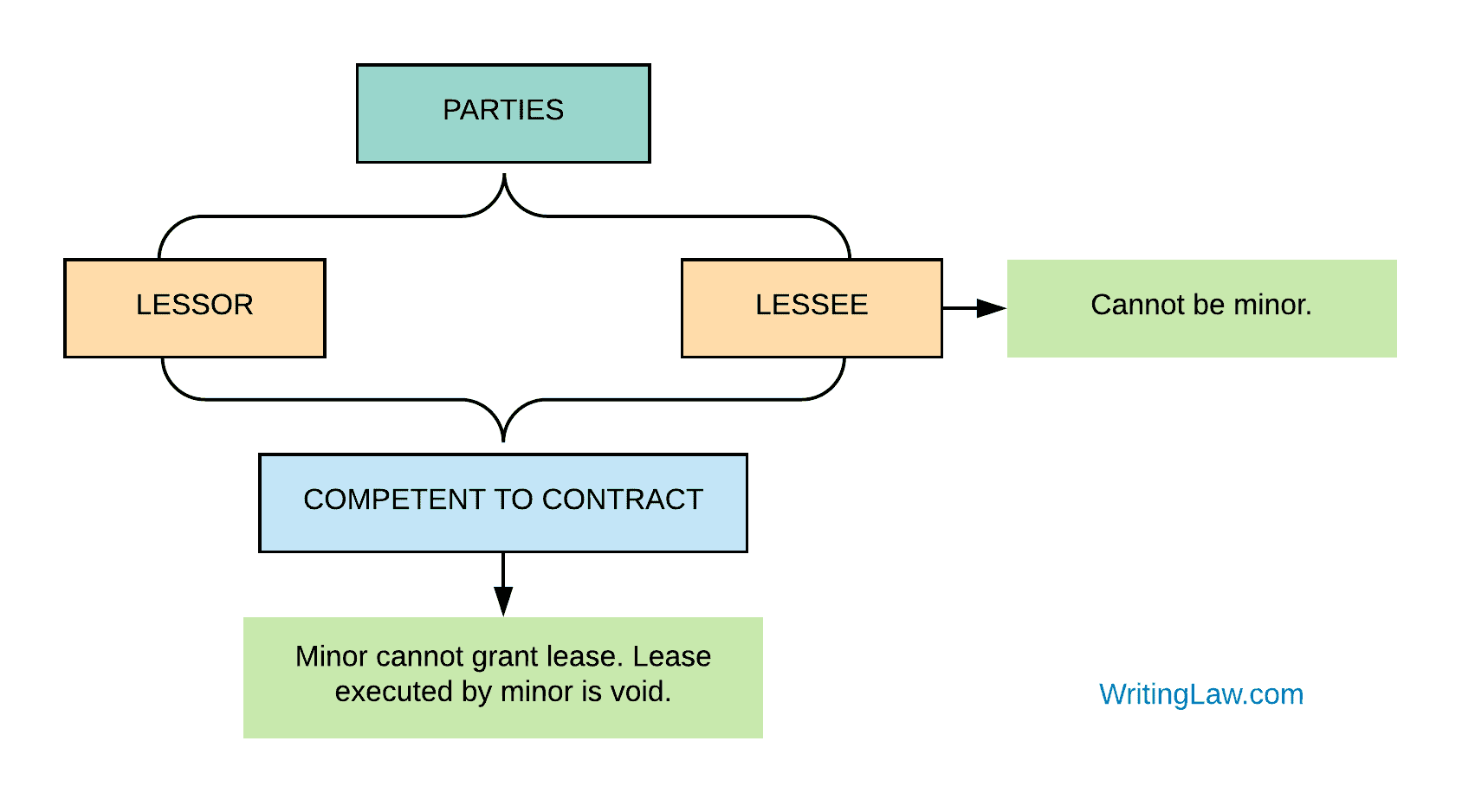Lease Under Transfer of Property Act
What is Lease?
Lease is a transfer of possession. Section 105 of TPA defines lease. Lease is a transfer of the right of enjoyment of an immovable property made for a certain period, in consideration of a price paid or promised to be made or money, share of crops, service or any other thing of value to be given periodically or on specified occasions by the transferee to the transferor.
A lease is not a transfer of ownership of property, but only possession is given for a certain time.
The transferor is called lessor (landlord), and the transferee is called lessee (tenant).
Essential Elements of Lease
The guardian of the minor may grant a lease for a period of 5 years (with an additional period of 1 year once the child attains majority) (reference made to section 8 of Hindu Minority and Guardianship Act). For more than this, the permission of the court is required.
2. Possession: (only immovable) (only usufruct is transferred)
3. Premium
The contract of a lease must be supported with some consideration. The consideration in a lease may be premium or rent.
Where the whole amount to be recovered as a consideration from the lessee in lump-sum (onetime), it is called premium.
When consideration is paid periodically, it is called the rent of the lease. Rent need not necessarily be in the form of money. It may be services, share, or other things so rendered.
4. Period
The right of use and enjoyment must be given to the lessee for a certain period of time. This time is called the term of the lease.
The term may be any period of time, longer, shorter, or even for perpetuity (lasting forever). But it must be specified in the deed.
Rights of Lessee
1. Right of accretions.
2. Right to avoid lease on the destruction of property.
3. Right to deduct the cost of repair.
4. Right to deduct outgoings.
5. Right to remove fixtures.
6. Right to remove crops.
7. Right to assign the interest.
Duties of Lessee
1. Duty to disclose facts.
2. Duty to pay rent.
3. Duty to maintain the property.
4. Duty to give notice of encroachment.
5. Duty to use the property reasonably.
6. Duty not to make a permanent structure.
7. Duty to restore possession.
Rights of Lessor
Section 108 does not provide for any specific right of the lessor but, because the rights and duties are co-relative, the liabilities of the lessee, which are given under this section, are the rights of lessor.
Duties of Lessor
1. Duty to disclose any material defects in the property.
2. Duty to give possession to the lessee at his request.
3. To provide by covenant a quiet enjoyment of the property to the lessee.
Termination of Lease
Section 111 of the Transfer of Property Act talks about Termination of Lease. Here are the following ways where a lease is terminated.
1. By lapse of time.
2. By happening of a specified event.
3. By the termination of lessor’s interest.
Where the lessor’s own interest in immovable property is limited, lease comes to an end upon the termination of the lessor interest.
4. By Merger.
Meeting of one’s interests with another’s interests. When a limited interest becomes an absolute interest, there is a merger.
For Example, If the landlord makes a gift or sells the tenanted house to the tenant. The tenant does not remain a tenant. He becomes the owner of the house.
This rule is based on the maxim: “Nemo Potest esse tenens et dominus.” It means nobody can be both a landlord and a tenant of the same property.
5. By express surrender.
Surrender is the opposite of a merger. In a merger, a larger interest is merged with smaller interest.
For Example, Where a tenant vacates the premises before the expiry of the term, the lease ends.
6. By implied surrender.
When a lessee accepts from the lessor a new lease of the same property which is already leased to him, there is implied surrender of the earlier lease, and a new lease is formed.
7. By forfeiture.
Means loss of the right of the lessee to use the property by some fault on his part. Lease is terminated by forfeiture on following grounds-
I. Breach of express conditions by the lessee.
II. Denial of the title of the landlord.
III. Insolvency of the lessee.
8. By the expiry of the notice to quit.
- Article 334A of the Constitution of India - 14th April 2024
- Article 332A of the Constitution of India - 14th April 2024
- Article 330A of the Constitution of India - 14th April 2024










as per lessor and lease agreement termination , because lessor house renovation purpose, then how many days later lessor should Wait for termination of lease electrical supply
Dear Kutton,
Sadly I could not understand your comment. So I forwarded it to my law friends who are preparing for judiciary exams.
Sadly they too could not understand your question.
Can you please elaborate it or frame it in another way?
Leave a comment here or reply to the email I sent you at 7:40 AM today.